Carney taps host of new MPs to 28-member cabinet, creates 10 secretaries of state
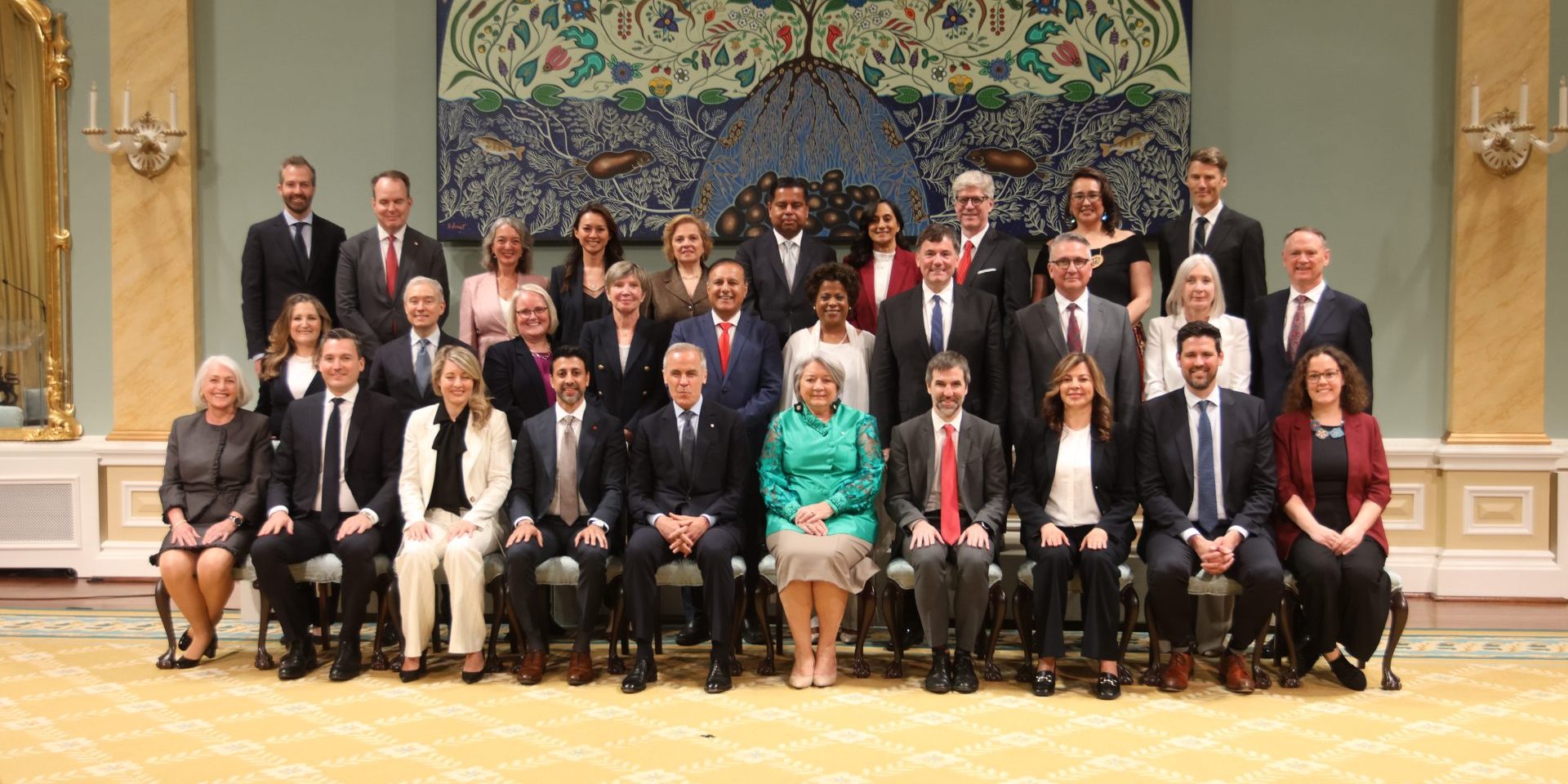
Prime Minister Mark Carney unveiled his first post-election cabinet on May 13 with a stable of new MPs joining many veterans in a 28-person inner circle supported by 10 additional secretaries of state.
A major shakeup to the prime minster’s top advisers welas expected as he faces the task of departing from former prime minister Justin Trudeau’s legacy. But, for a second time, many Trudeau-era heavyweights have remained in cabinet, including Industry Minister Mélanie Joly (Ahuntsic–Cartierville, Que.), Intergovernmental Affairs Minister Dominic LeBlanc (Beauséjour, N.B.), Jobs and Families Minister Patty Hajdu (Thunder Bay-Superior North, Ont.), Transport and Internal Trade Minister Chrystia Freeland (University–Rosedale, Ont.), Foreign Affairs Minister Anita Anand (Oakville East, Ont.), and Canadian Identity and Culture Minister Steven Guilbeault (Laurier-Sainte-Marie, Que.). Most in this group—save for Freeland—took on entirely new portfolios or had some shifts to their roles, like Guilbeault and LeBlanc who had more added to their respective plates. François-Philippe Champagne (Saint Maurice-Champlain, Que.), who stayed on as finance minister, also took on national revenue.
Carney (Nepean, Ont.) kept a dozen ministers from his first cabinet, named in March, and added 16 new names, with all but one brand new to cabinet responsibilities. Sean Fraser (Central Nova, N.S.), who previously served in Trudeau’s cabinet as housing and immigration minister, will serve as the justice minister. He had previously announced he wouldn’t run for re-election, but reversed course this spring.
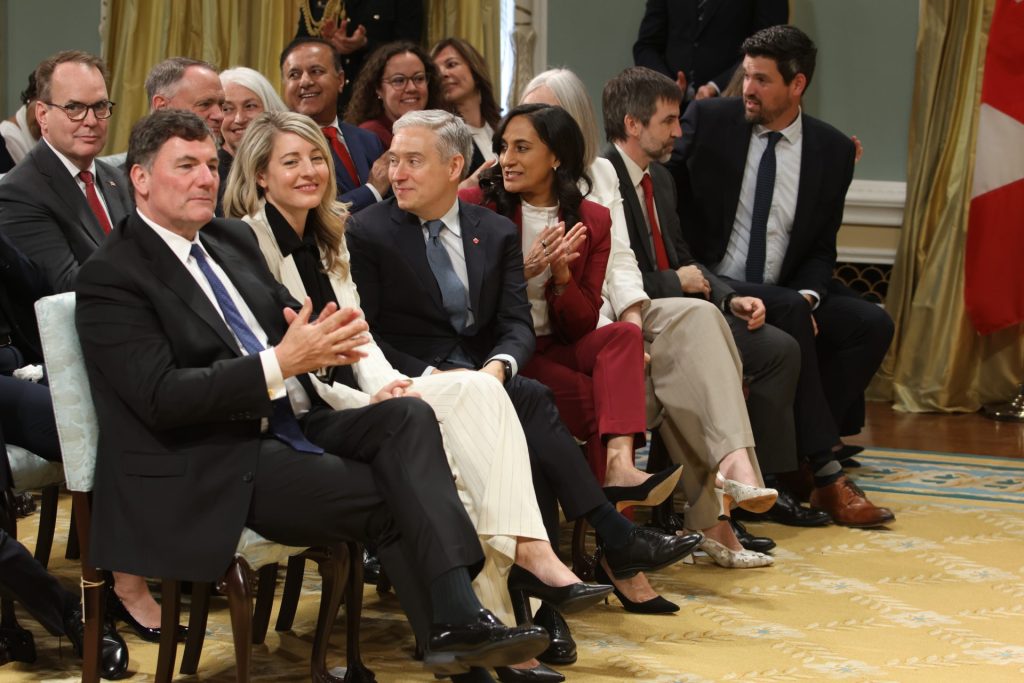
The cabinet unveiling struck a robust economy-focused tone, with roles emphasizing economic development and Canada-U.S. trade, as well as international trade, with LeBlanc’s role including “One Canadian Economy.” The PMO press release following the swearing-in introduced Carney’s new cabinet as having a “strong mandate” to oversee “a new economic and security relationship with the United States,” and to work to build a stronger economy. A longtime senior minister, LeBlanc has also been tasked with stick-handling Canada-U.S. trade, intergovernmental affairs, and serving as president of the King’s Privy Council.
At a press conference following the cabinet shuffle, Carney emphasized his focus on developing a new economic and security relationship with the U.S., and strengthening this country’s economy.
“We are at the start of an industrial transformation,” he said, adding that the greatest “opportunity” for Canada is to reduce interprovincial trade barriers.
Carney said his government will grow an economy that “creates jobs, increases wages, and is resilient in the face of economic shock.”
Carney said his cabinet is “purpose-built for this hinge moment in Canada’s history,” and will fast-track legislation for “nation-building investments,” while also eliminating federal barriers to internal trade.
He highlighted other legislative priorities, including fighting “unfair” tariffs in place from U.S. President Donald Trump, continuing negotiations in the trade war, and reinforcing trade relationships with reliable partners.
The prime minister also struck an ambitious tone around housing affordability, saying his government would “create an entirely new Canadian housing industry” in modular and pre-fabricated homes, “using Canadian technology, Canadian skilled workers, and Canadian lumber.”
Carney’s pre-election “war cabinet” was a pared down version of his predecessor’s, and he drew criticism for abandoning gender parity goals trumpeted by Trudeau. This time, there are a total of 38 members of Carney’s ministry, with equal numbers of men and women. The ministers are responsible for large portfolios, while the more junior secretaries of state don’t have the same budget powers as full ministers. Trudeau didn’t assign secretaries of state to his cabinet, which grew steadily and was composed of 36 ministers by the time he resigned, and at one point held 40 members.
More than half of Carney’s cabinet ministers come from Quebec and Ontario, with 18 of 28 hailing from these two provinces. Three ministers are from Ontario’s Brampton region, which was something of a battleground on election night.
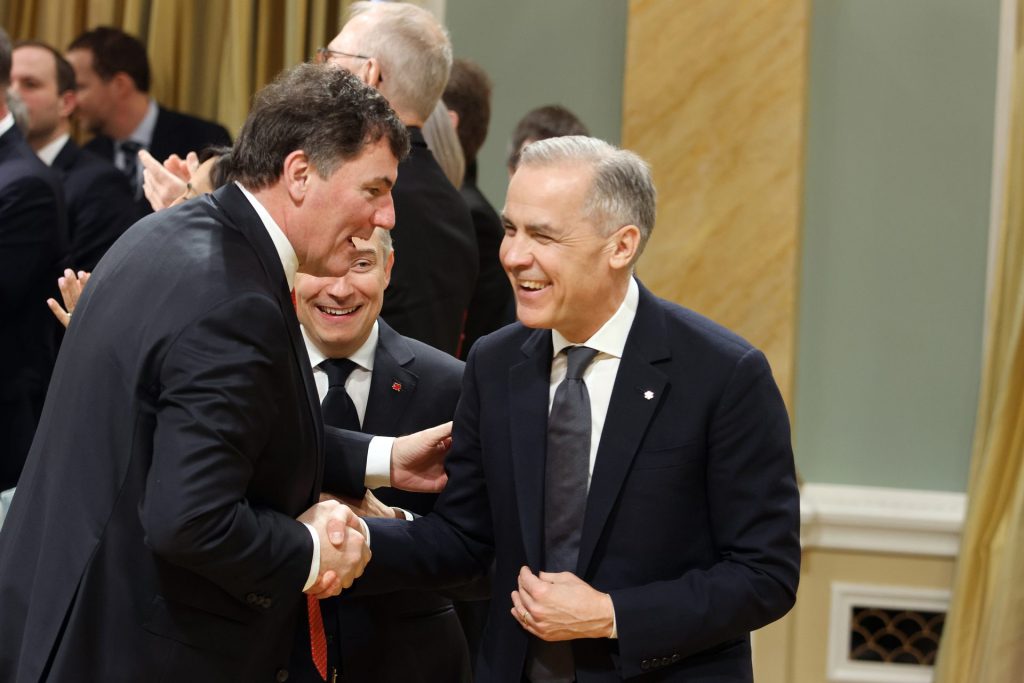
Nova Scotia and British Columbia each have two ministers, while Alberta, Manitoba, New Brunswick, Newfoundland, Prince Edward Island, and the Northwest Territories each have one. Hill watchers surmised that the cabinet should have multiple ministers hailing from Western Canada, amid rumblings of Alberta separatism and a newly rejuvenated Liberal presence in Saskatchewan.
New faces in cabinet
Among the new faces in Carney’s cabinet are Tim Hodgson (Markham-Thornhill, Ont.), a business executive who previously worked alongside Carney at the Bank of Canada. He will serve as the minister of natural resources and energy, replacing Jonathan Wilkinson (North Vancouver-Capilano, B.C.), who was shuffled out of cabinet.
Rebecca Chartrand (Churchill—Keewatinook Aski, Man.) was named northern and Arctic affairs minister, and is also responsible for the Canadian Northern Economic Development Agency. Chartrand, an Indigenous woman from Winnipeg, flipped a northern Manitoba riding that had been an NDP stronghold for decades.
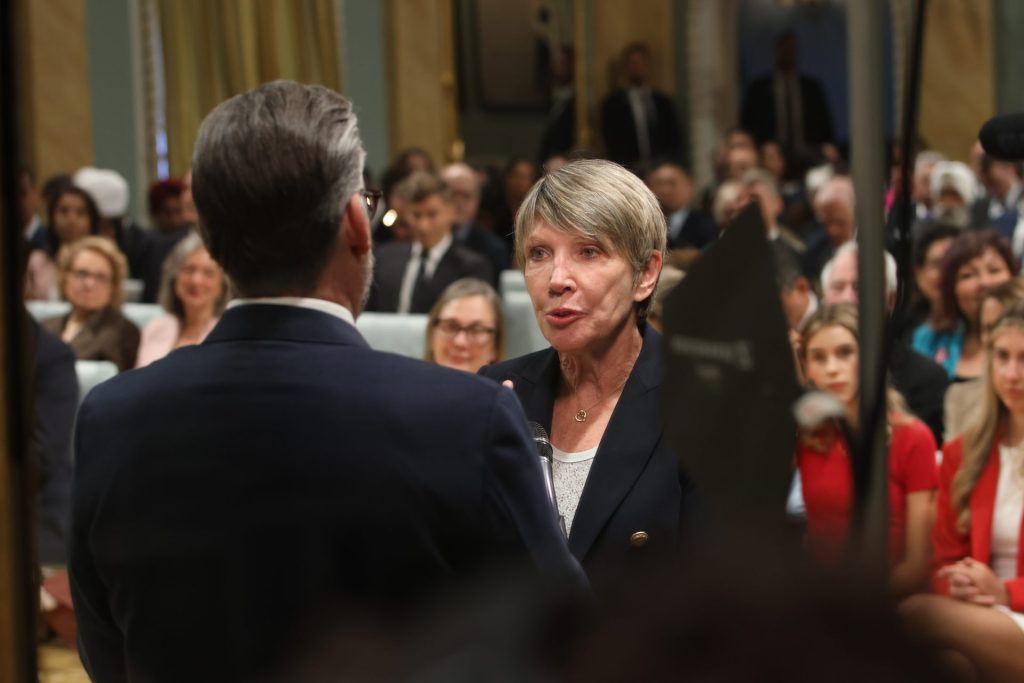
community resilience. The Hill Times photograph by Sam Garcia
Eleanor Olszewski, newly elected to Edmonton Centre, Alta., was tapped to be minister of emergency management and community resilience, as well as minister responsible for the Prairies Economic Development Canada. Putting an Alberta MP in cabinet was seen as something of an olive branch amid signals of increased interest around Alberta separation.
Evan Solomon (Toronto Centre, Ont.), former political journalist, was chosen to lead a portfolio that includes artificial intelligence and digital innovation, as well as the minister responsible for the Federal Economic Development Agency for Southern Ontario.
Former Vancouver mayor Gregor Robertson (Vancouver Fraserview–South Burnaby, B.C.) is now housing minister, taking over for Nate Erskine-Smith (Beaches-East York, Ont.), who is no longer in cabinet.
This cabinet shuffle also heralds the return of a ministry of women and gender equality, something Carney faced criticism for dropping in his first cabinet. Not only is Rechie Valdez (Mississauga-Streetsville, Ont.) reviving the portfolio of women and gender equality, she is the lone minister pulling double duty as a secretary of state for small business and tourism. Valdez was most recently chief government whip, and before that minister of small business.
It’s also the first time a cabinet portfolio has been dedicated to artificial intelligence. Newly elected Mandy Gull-Masty (Abitibi-Baie-James-Nunavik-Eeyou, Que.) was named minister of Indigenous services, marking the first time an Indigenous person has held the title. She was previously head of the Grand Council of the Crees.
Carney was also criticized in his initial cabinet makeup for folding the labour ministry into other portfolios. Labour is still not its own standalone ministry, but is the the responsibility of secretary of state John Zerucelli (Etobicoke North, Ont.)
Julie Dabrusin (Toronto–Danforth, Ont.) is now minister of environment and climate change, with former minister Terry Duguid (Winnipeg South, Man.) shuffled out of cabinet.
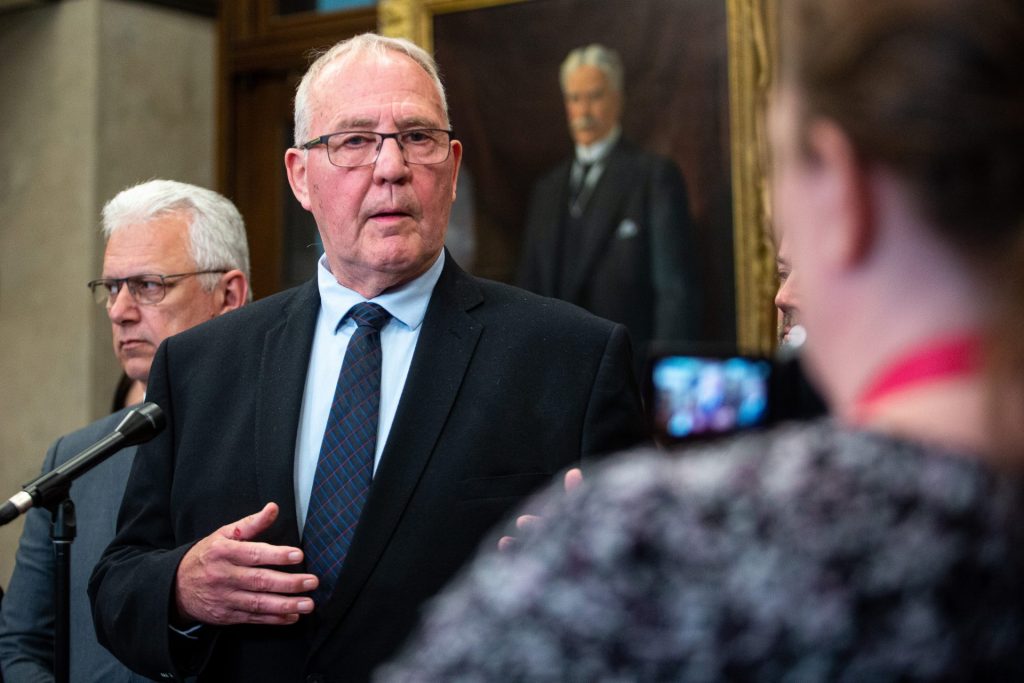
Another former minister who was shuffled from cabinet was Ginette Petitpas Taylor (Moncton-Dieppe, N.B.), formerly president of the Treasury Board, a portfolio picked up by Shafqat Ali (Brampton–Chinguacousy Park, Ont.). Bill Blair (Scarborough Southwest, Ont.), formerly national defence minister, was also shuffled out of cabinet after having served as a minister since 2018.
Many stalwart ministers have a change in roles, including Joly, who was formerly tasked with foreign affairs and now takes on industry, renamed by Carney after Trudeau shifted the portfolio name to innovation. She is also responsible for the Economic Development Agency of Canada for the Regions of Quebec.
LeBlanc, meanwhile, is now the president of the King’s Privy Council and minister responsible for Canada-U.S. trade, and international affairs. He was formerly minister of international trade and intergovernmental affairs.
David McGuinty (Ottawa South, Ont.), who was first promoted to cabinet under Trudeau in December 2024 as public safety minister, no longer has that role or the emergency preparedness portfolio handed to him in Carney’s March shuffle, and is now responsible for national defence.
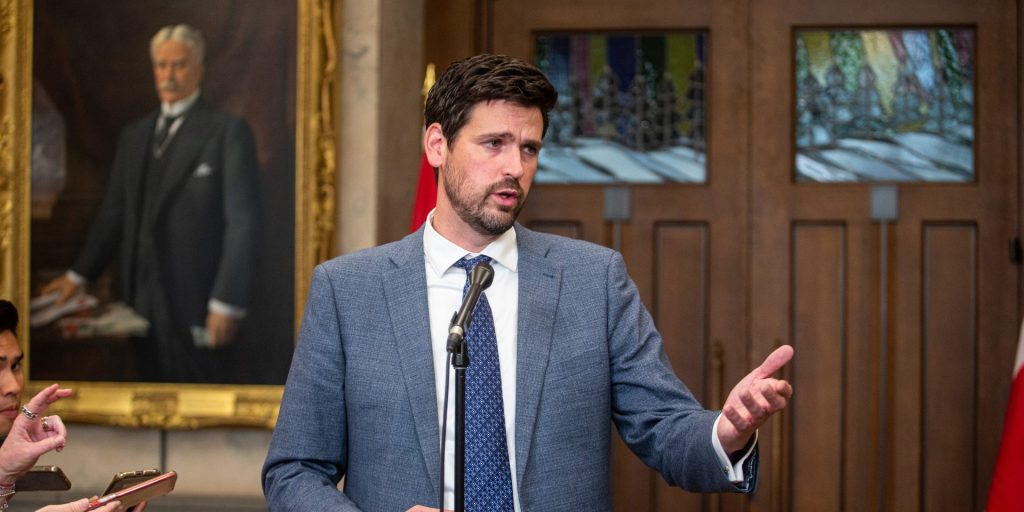
Freeland, meanwhile, remains in the role she took on in Carney’s first cabinet in March overseeing transport and internal trade. Freeland resigned from her role as Trudeau’s finance minister back in December just moments before a fall economic update in Parliament, citing differences in how to respond to United States President Donald Trump’s impending tariffs.
Members of the House of Commons are currently paid a base salary of $209,800 per year, with ministers paid an additional $99,900, plus a $2,000 car allowance. Secretaries of state receive an additional $74,700 per year.
The Rideau Hall ceremony on May 13 brought out many Canadian political heavyweights, including former prime minister Jean Chrétien; Liberal campaign director Andrew Bevan; and former governors general David Johnston, Michaëlle Jean, and Adrienne Clarkson. Former PCO clerk Janice Charette was also in attendance as was Gerry Butts, who was involved in Carney’s campaign and who previously served as Trudeau’s principal secretary. Carney’s wife Diana was also present alongside at least two of their daughters. His outgoing chief of staff and former MP Marco Mendicino was also in the room.
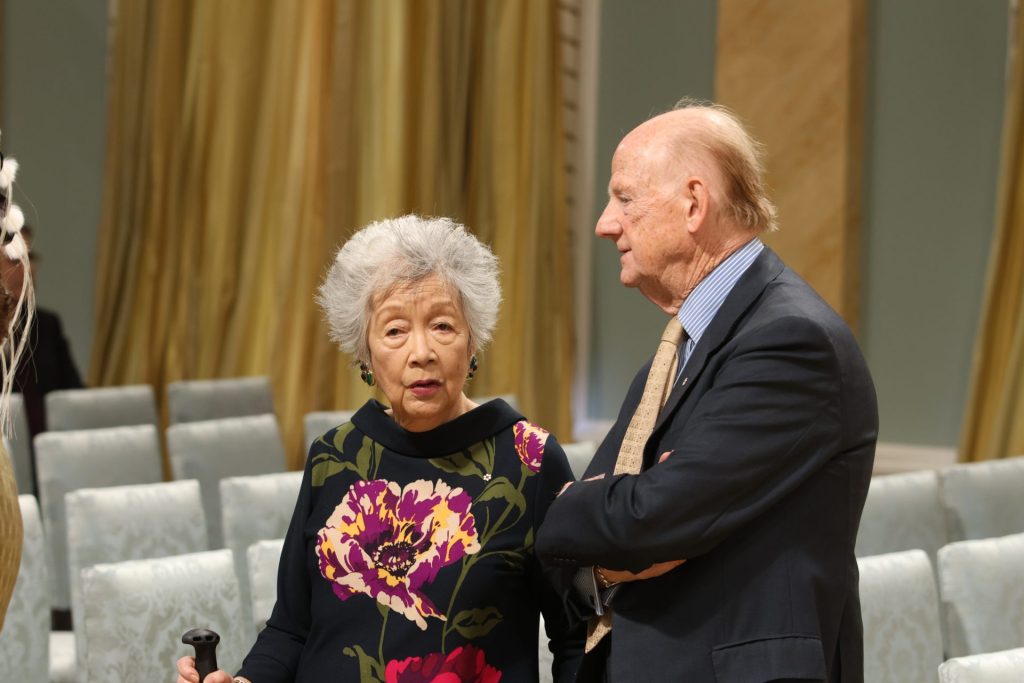
Rookie MPs make up half of secretaries of state
Half of the secretaries of state are rookie MPs, with one Trudeau-era cabinet minister in the mix with Ruby Sahota. She returned to Parliament for a fourth term, winning her riding of Brampton North-Caledon, Ont., by 742 votes this election, and was given a secretary of state position for “combatting crime.”
A mix of 10 newly-elected MPs and first-time cabinet members are set to serve as secretaries of state, a role absent in Carney’s predecessor’s cabinet. The prime minister said the secretaries would “provide dedicated leadership on key issues and priorities within their minister’s portfolio.”
Wayne Long (Saint John-Kennebecasis, N.B.), a longtime Liberal caucus member who was among the first MPs to call for Trudeau’s resignation, was tapped as secretary of state overseeing the Canada Revenue Agency and financial institutions.
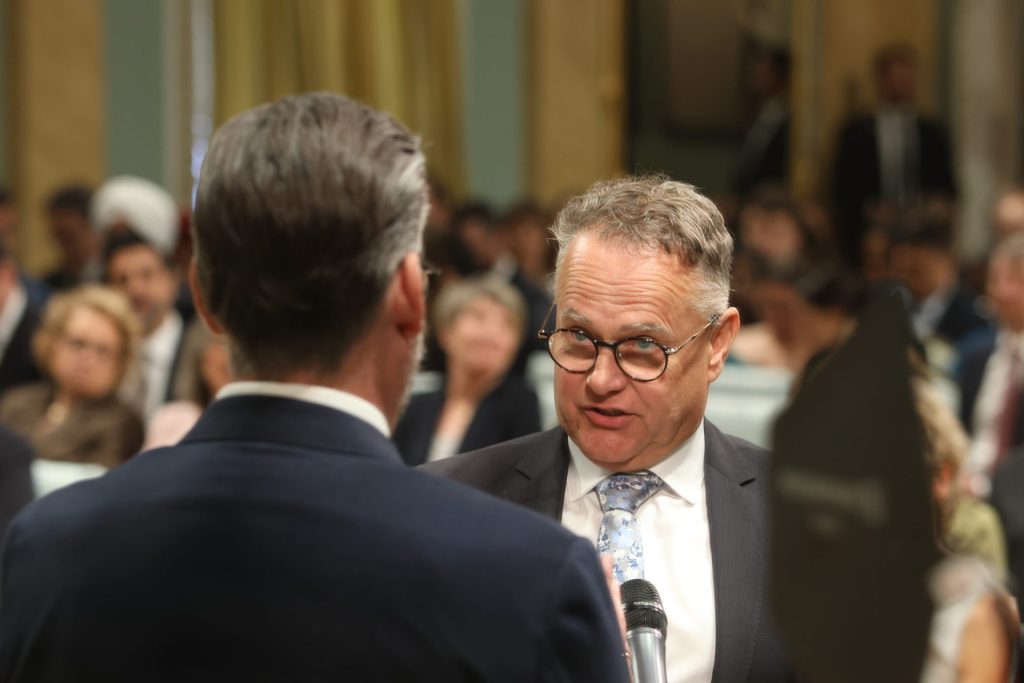
First-time MPs serving as secretary of state include Buckley Belanger (Desnethé-Missinippi-Churchill River, Sask.) and Nathalie Provost (Châteauguay-Les Jardins-de-Napierville, Que.). Belanger, who has taken on the portfolio of rural development, is the sole Liberal MP representing Saskatchewan.
The Liberals lost their footing in that province after longtime MP Ralph Goodale lost his seat in Regina-Wascana, Sask., in 2019.
Provost, a gun control advocate and survivor of the 1989 École Polytechnique massacre, who won her riding with 45 per cent of the vote, takes on the role of secretary of state for nature.
Another notable face is Stephen Fuhr (Kelowna, B.C.), who has been given the defence procurement portfolio. Fuhr made his way back into the House of Commons off the heels of a 2019 defeat, where he was unseated by first-time Conservative MP Tracey Gray, whom he narrowly bested by 1,000 seats this time around.
mglass@hilltimes.com
ewand@hilltimes.com
The Hill Times
Carney names 28 ministers
| Minister | Responsible for: | New to Cabinet? |
| Anita Anand | Foreign Affairs | No |
| Chrystia Freeland | Transport and Internal Trade | No |
| David McGuinty | National Defence | No |
| Dominic LeBlanc | President of the King’s Privy Council, responsible for Canada-U.S. trade, Intergovernmental Affairs, and One Canadian Economy | No |
| Eleanor Olszewski | Emergency Management and community resilience, minister responsible for Prairies Economic Development Canada | Yes |
| Evan Solomon | Artificial Intelligence and Digital Innovation, FedDev agency for Southern Ontario | Yes |
| François-Philippe Champagne | Finance and National Revenue | No |
| Gary Anandasangaree | Public Safety | No |
| Gregor Robertson | Housing and Infrastructure, minister responsible for Pacific Economic Development Canada | Yes |
| Heath MacDonald | Agriculture and Agri-Food and Rural Economic Development | Yes |
| Jill McKnight | Veterans Affairs, associate minister of defence | Yes |
| Joanne Thompson | Fisheries | No |
| Joël Lightbound | Government Transformation, Public Works and Procurement | Yes |
| Julie Dabrusin | Environment and Climate Change | Yes |
| Lena Metlege Diab | Immigration, Refugees, and Citizenship | Yes |
| Mandy Gull-Masty | Indigenous Services | Yes |
| Maninder Sidhu | International Trade | Yes |
| Marjorie Michel | Health | Yes |
| Mélanie Joly | Industry, responsible for Canada Economic Development for Quebec regions | No |
| Patty Hajdu | Jobs and Families, FeDev Northern Ontario | No |
| Rebecca Alty | Crown-Indigenous Relations | Yes |
| Rebecca Chartrand | Northern and Arctic Affairs, responsible for the Canadian Northern Economic Development Agency | Yes |
| Rechie Valdez | Women and Gender Equality, secretary of state to Small Business and Tourism | No |
| Sean Fraser | Justice and Attorney General of Canada | Yes to Carney’s cabinet. |
| Shafqat Ali | President of the Treasury Board | Yes |
| Steven Guilbeault | Canadian Identity and Culture, responsible for Official languages | No |
| Steven MacKinnon | House Leader | No |
| Tim Hodgson | Natural Resources and Energy | Yes |
Carney taps 10 secretaries of state
| Secretary of State | Responsible for: |
| Adam van Koeverden | Sport |
| Anna Gainey | Children and Youth |
| Buckley Belanger | Rural Development |
| John Zerucelli | Labour |
| Nathalie Provost | Nature |
| Randeep Sarai | International Development |
| Ruby Sahota | Combatting Crime |
| Stephanie McLean | Seniors |
| Stephen Fuhr | Defence Procurement |
| Wayne Long | Canada Revenue Agency and Financial Institutions |
Who’s out of cabinet?
| MP | Former cabinet post |
| Terry Duguid | Environment and Climate Change |
| Kody Blois | Agriculture and Agri-Food and Rural Economic Development |
| Ali Ehsassi | Government Transformation, Public Services, and Procurement |
| Arielle Kayabaga | Democratic Institutions |
| Bill Blair | National Defence |
| Nate Erskine-Smith | Housing, Infrastructure, and Communities |
| Élisabeth Brière | Veterans Affairs, Minister responsible for the Canada Revenue Agency |
| Rachel Bendayan | Immigration, Refugees, and Citizenship |
| Jonathan Wilkinson | Energy and Natural Resources |
| Ginette Petitpas Taylor | President of the Treasury Board |





 LICENSING
LICENSING PODCAST
PODCAST ALERTS
ALERTS













